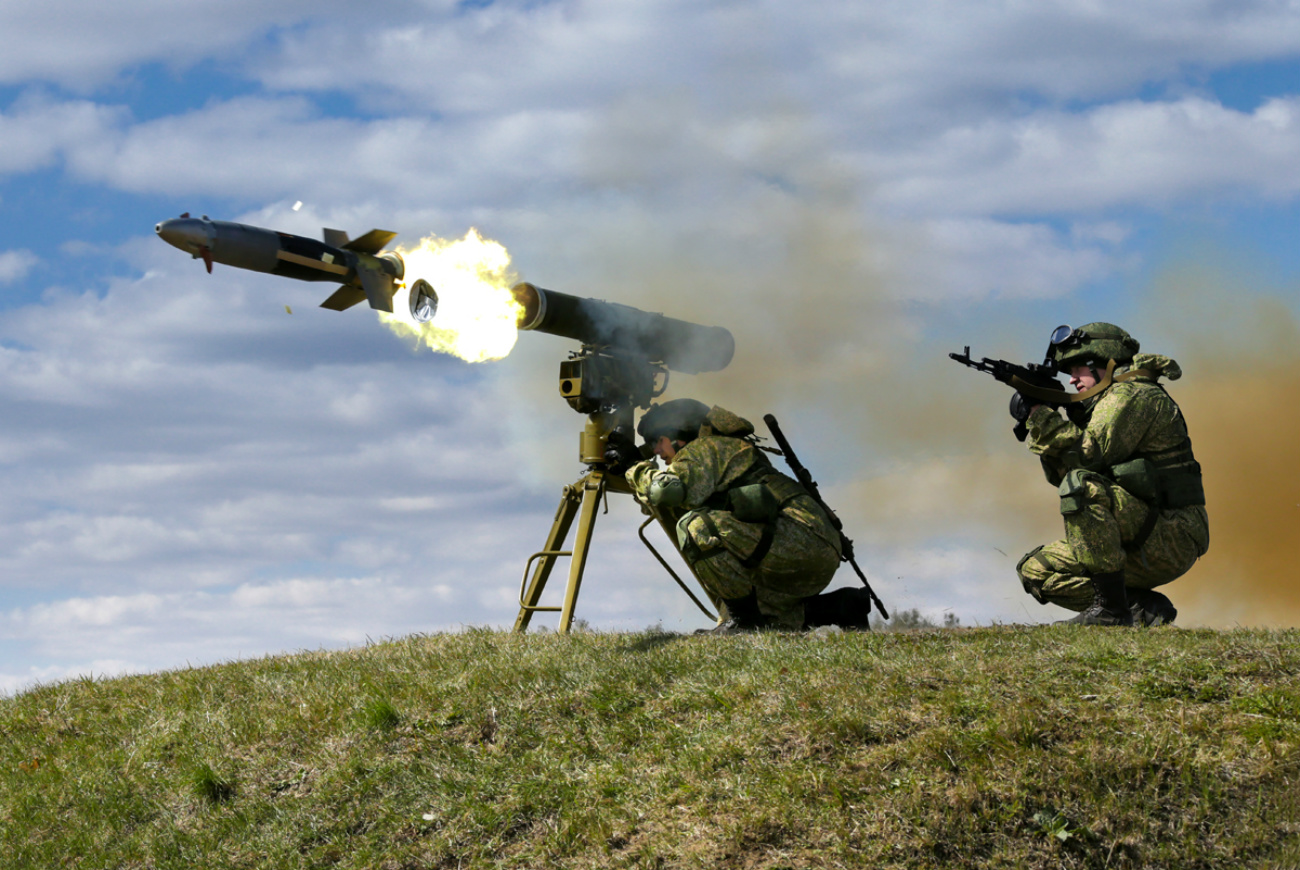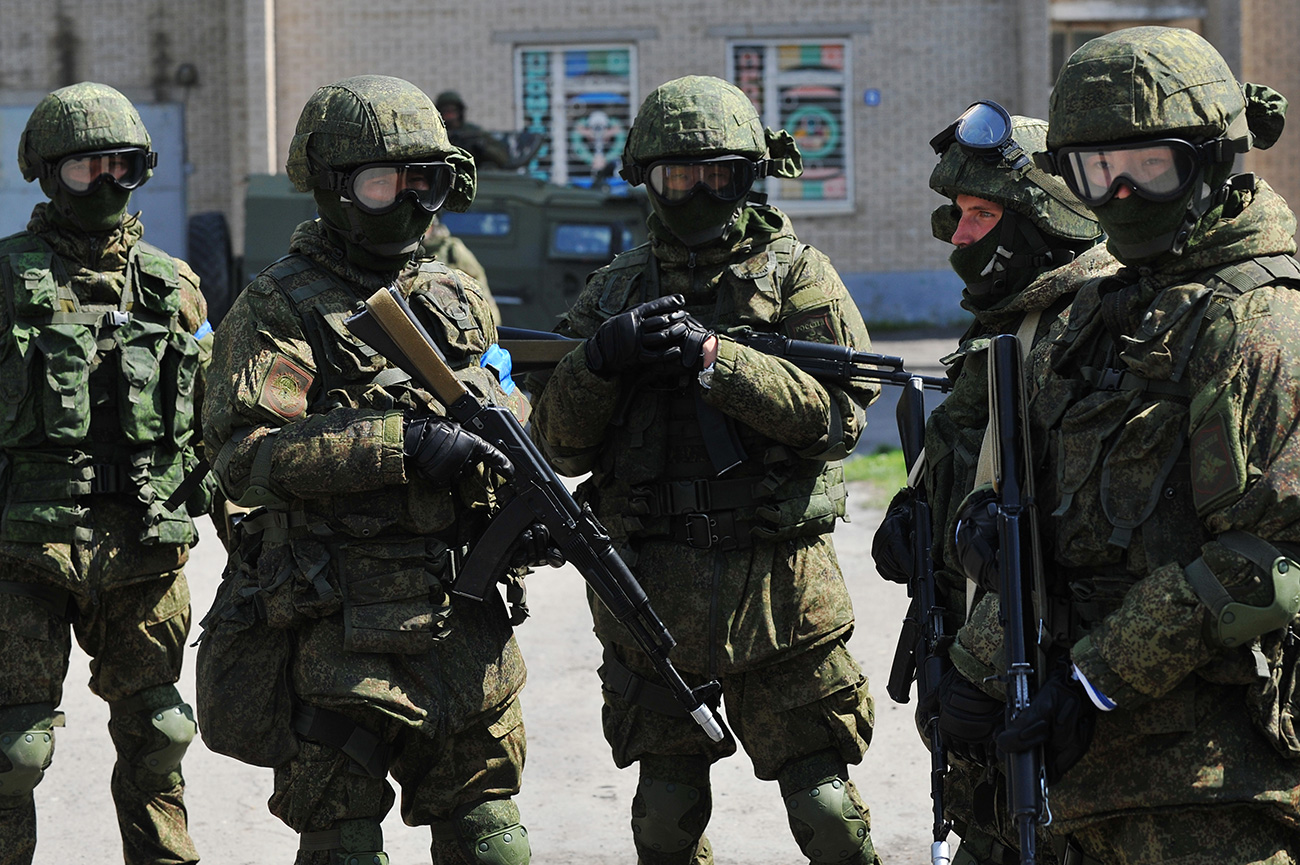Why are Russian Special Forces grateful for the Kornet missiles?

The Kornet anti-tank missile can even be used against air targets like helicopters.
Ministry of Defence of the Russian FederationAs a result of miscommunication with the Syrian Army, 16 commandos from a Russian Special Operation Forces unit were left facing more than 300 Al-Nusra Front mercenaries in the Aleppo Province in a confrontation in April 2017.
Spetsnaz (a word used in Russia to describe the Special Forces) units are in Syria for on-the-ground intelligence operations to help the Russian Aerospace Forces and the Syrian Army target the facilities of militants.
In a fight that lasted two days, members of the unit said in a rare public interview on May 10 that they “managed to destroy a suicide-bomber vehicle, two infantry fighting vehicles, one tank and countless number of militants.” No Spetsnaz fighters were wounded, the unit members said.
The commandos said they were grateful for the Kornet anti-tank guided missile. In this video footage you can see how Kornet missiles destroyed the suicide-bomber vehicle.
'Pocket artillery'
The Kornet anti-tank guided missile was codenamed Spriggan by NATO. Spriggans are a type of small Scottish rock goblins that have the ability to inflate themselves to giant size.
While the exact logic behind this naming is a matter of guesswork, the name provides a clue about the Kornet's most important technical characteristics and why this weapon is so favored by the Spetsnaz.
The Kornet was designed in the 1990s as an anti-tank guided missile, and tanks are still its main target. However, according to its engineers the Kornet can even be used against air targets like helicopters, which makes it a multipurpose missile.
The Kornet launcher and missiles packages weigh 30 kilograms each and can be easily managed by two people. In one of the first commercials about the missile produced in the 1990s, the manufacturers showed the Kornet could be safely transported even by donkeys in mountainous regions. The missiles could be dropped on the ground and did not need special storage conditions.
The Kornet can be deployed within one minute and is able “to penetrate more than a meter of steel armor, including reactive armor.” This means, that all main battle tanks including the M1A2 Abrams, AMX-56 Leclerc, Challenger 2, Leopard 2A6 and Merkava Mk3 are easy targets as none of them have such heavy armor.
On top of this, the laser guidance and infrared sight used by the Kornet makes it all-weather and anti-jamming. The launch of a Kornet is difficult to spot and it can hit targets on a range between 3 kilometers at night and 5 kilometers in daylight.
Israel scandal
 The relatively lightweight missile can be carried by two commandoes. Source: Ministry of Defense
The relatively lightweight missile can be carried by two commandoes. Source: Ministry of Defense
When asked whether the Kornet had been used in recent conflicts against Abrams or Merkava tanks, its engineers said that they did not have such data and could only rely on open internet sources.
According to those sources, Kornet was used during the Israel-Lebanon War in 2006, in which, according to Israel, 46 Merkava tanks were hit in total. Hezbollah sources said that Israel lost 164 Merkavas.
The alleged use by Hezbollah of the Kornets that Russia supplied Syria with, led to a diplomatic scandal with Israeli diplomats flying to Moscow to show proof of such use.
Moscow did not confirm the transfer, but apparently put more control on how countries that get Russian weapons use them.
Another case of an allegedly successful use of the missiles was presented by the ISIS-linked Amaq news agency, which released a video that depicts the destruction of a U.S.-made Abrams M1 main battle tank near Mosul, Iraq.
How it works
Despite the fact that the Kornet is used by highly-trained Spetsnaz units in Syria, no special knowledge is needed to use it.
A user only needs to find a target through the weapon's optical sight and shine a laser beam on it. The missile will guide itself while the user keeps the laser on the target.
The feature that makes the Kornet highly effective is the use of dual shaped charge warheads.
The first one detonates the tank’s reactive armor (protective layer of explosives) and the second one, which is the main warhead, burns through the armor and destroys the target.
If using any of Russia Beyond's content, partly or in full, always provide an active hyperlink to the original material.
Subscribe
to our newsletter!
Get the week's best stories straight to your inbox
